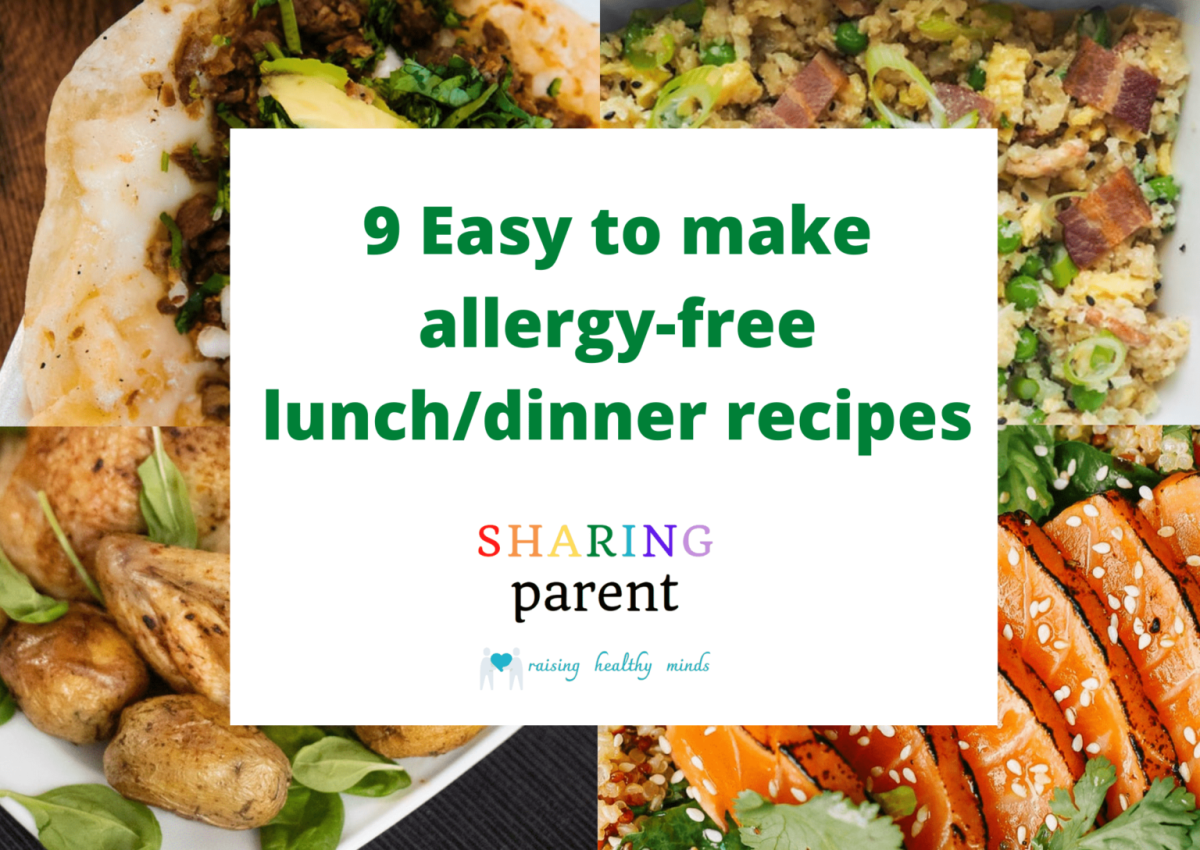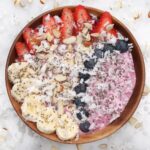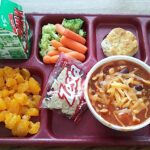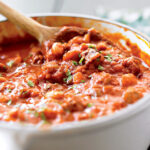Tired of lunchbox boredom and allergen worries? Imagine vibrant, flavorful, and completely safe lunches, crafted with ease and ready to go each day. This guide unveils the secrets to effortless allergen-free meal prepping, transforming your lunchtime experience from stressful to satisfying. We’ll explore nutritious ingredients, quick recipes, smart strategies for weekly planning, and even the art of visually appealing lunchbox packing. Get ready to conquer your lunch routine and embrace a world of delicious, allergy-friendly possibilities!
Discover a treasure trove of five essential, versatile ingredients, each packed with nutritional benefits and offering creative substitution options. We’ll delve into three simple, time-saving recipes with exciting variations to suit every palate. Learn how to create a weekly meal plan that’s both efficient and diverse, ensuring a delightful and healthy lunch awaits you every day. Finally, we’ll guide you through the art of packing the perfect allergen-free lunchbox, keeping your food fresh, safe, and visually appealing.
Allergen-Free Meal Prep Strategies for a Week
Planning ahead is key to maintaining a healthy and allergen-free diet. A well-structured meal prep plan ensures you always have delicious and safe lunches ready, saving time and reducing stress during the busy workweek. This plan focuses on variety and efficiency, minimizing cooking time and maximizing nutritional value. Each recipe is designed to be easily adaptable to individual dietary needs and preferences.
Weekly Allergen-Free Lunch Plan
This plan provides five distinct allergen-free lunch options for a week, emphasizing diverse flavors and textures while ensuring ease of preparation and storage. Each lunch is designed to be both nutritious and satisfying, keeping you energized throughout your workday. The preparation times indicated are estimates and may vary depending on individual cooking skills and kitchen equipment.
- Monday: Quinoa Salad with Roasted Vegetables: Prepare roasted vegetables (bell peppers, zucchini, and onions) on Sunday evening. Combine with cooked quinoa, chopped fresh herbs (parsley, cilantro), and a lemon-tahini dressing. Preparation Time: 30 minutes (including roasting); Storage: Refrigerator, up to 3 days.
- Tuesday: Lentil Soup: Make a large batch of hearty lentil soup on Sunday. This soup is packed with protein and fiber, providing sustained energy. Preparation Time: 45 minutes; Storage: Refrigerator, up to 4 days; Freezes well.
- Wednesday: Chicken and Vegetable Stir-fry: Cook chicken breast and your favorite stir-fry vegetables (broccoli, carrots, snap peas) on Sunday. Use a tamari or coconut aminos based sauce for flavor. Serve over brown rice or quinoa. Preparation Time: 40 minutes; Storage: Refrigerator, up to 3 days.
- Thursday: Leftover Lentil Soup: Enjoy the remaining lentil soup from Tuesday. Consider adding a dollop of plain coconut yogurt for extra creaminess. Preparation Time: 5 minutes (reheating).
- Friday: Hard-boiled Eggs with Avocado and Salad: Prepare hard-boiled eggs and a simple green salad (lettuce, cucumber, tomato) on Sunday. Add sliced avocado for healthy fats. Preparation Time: 20 minutes; Storage: Eggs – refrigerator, up to a week; Salad – best consumed fresh.
Comprehensive Shopping List
This list categorizes ingredients for efficient supermarket shopping. Remember to check all labels for potential allergens, even in products you typically consider safe. This list assumes you already have basic pantry staples like salt, pepper, and olive oil.
- Produce: Bell peppers (various colors), zucchini, onions, parsley, cilantro, lemons, broccoli, carrots, snap peas, lettuce, cucumber, tomatoes, avocado.
- Grains & Legumes: Quinoa, brown rice, lentils.
- Protein: Chicken breast (or other allergen-free protein source).
- Dairy Alternatives (Optional): Plain coconut yogurt.
- Pantry: Tahini, tamari or coconut aminos, vegetable broth.
Visual Guide to Allergen-Free Lunch Box Packing
Packing an allergen-free lunch can feel daunting, but with a little planning and the right tools, it becomes a straightforward process. This guide will help you create visually appealing and nutritionally balanced lunches that are safe and delicious. We’ll explore the ideal lunchbox design, packing strategies, and temperature maintenance techniques to ensure your allergen-free meals stay fresh and enjoyable throughout the workday.
An ideal allergen-free lunchbox is designed to maintain separation between different food groups and prevent cross-contamination. Imagine a vibrant, rectangular lunchbox, approximately 10 inches long, 7 inches wide, and 3 inches deep. This size provides ample space without being bulky. Visually, you can picture it in a cheerful, bright color like sunshine yellow or sky blue.
Ideal Allergen-Free Lunchbox Compartmentalization
The ideal lunchbox features multiple compartments to keep foods separate and organized. This prevents cross-contamination and maintains the texture and freshness of each component. The compartments should be clearly defined and easily accessible.
Imagine a lunchbox with three main compartments: a large central section for the main course (e.g., a salad, sandwich, or leftovers), a smaller compartment for a side dish (e.g., fruit, vegetables, or a small portion of grains), and a separate, leak-proof container for a dressing or sauce. A fourth, smaller section could be dedicated to snacks, such as nuts (if tolerated) or allergen-free granola bars. Visualize each compartment clearly defined with contrasting colors or visible dividers. The lid should be secure and easy to open and close.
Step-by-Step Allergen-Free Lunch Packing
To ensure a balanced and appealing allergen-free lunch, follow these steps:
- Choose your main course: Select a protein source (e.g., grilled chicken, tofu, beans), a carbohydrate (e.g., quinoa, brown rice, sweet potato), and plenty of vegetables. Visualize a colorful mix of textures and colors, for example, vibrant red bell peppers alongside green spinach and grilled chicken breast.
- Prepare your side dish: A small portion of fruit or a side salad adds freshness and nutrients. Imagine a small container filled with colorful berries, or a vibrant green salad with cherry tomatoes and cucumber.
- Pack your snacks: Include a small, healthy snack to prevent mid-afternoon hunger. Visualize a small container with a handful of allergen-free trail mix or a small portion of cut vegetables.
- Add your dressing or sauce (if applicable): Pack any dressing or sauce in a separate, leak-proof container to prevent it from soaking into other food items. Imagine a small, clear container filled with a vibrant vinaigrette or a creamy, dairy-free sauce.
- Assemble the lunchbox: Carefully place each item in its designated compartment, ensuring everything is securely packed to prevent spills or messes. Visualize the colorful, organized arrangement of food within the lunchbox, ready to be enjoyed.
Maintaining Temperature and Freshness
Maintaining the temperature and freshness of your allergen-free lunch is crucial. Several strategies can help ensure your food remains safe and palatable throughout the day.
- Use an insulated lunch bag: An insulated lunch bag with an ice pack will help keep cold foods cold and prevent bacterial growth. Imagine a sturdy, insulated bag, perhaps in a coordinating color to the lunchbox, with a zippered closure and a dedicated pocket for an ice pack.
- Freeze some components: Freezing components like fruit or yogurt can act as a natural ice pack while also contributing to the lunch. Visualize a frozen yogurt tube or a few frozen grapes tucked within the lunchbox.
- Pack foods separately: Keep hot and cold foods in separate containers to prevent temperature transfer. Visualize a thermos for hot soup kept separate from the cold salad components.
- Choose non-perishable options: For some components, opt for non-perishable options like dried fruit or nuts (if tolerated) to eliminate concerns about spoilage. Imagine a small bag of dried cranberries or a small container of roasted nuts (if tolerated) tucked into the lunchbox.
Recipe & Step-by-Step Guide

This recipe provides a vibrant and nutritious allergen-free quinoa salad, perfect for meal prepping and enjoying throughout the week. The combination of textures and flavors creates a satisfying and healthy lunch option suitable for various dietary restrictions. Each step is detailed to ensure a successful and delicious outcome.
Ingredients
This detailed ingredient list provides precise quantities for a serving of four. Adjust as needed for your desired portion size. Remember to always check ingredient labels to ensure they meet your specific allergen requirements.
- 1 cup quinoa, rinsed
- 2 cups vegetable broth (or water)
- 1 cup chopped cucumber, providing a refreshing crunch
- 1 red bell pepper, diced, adding a sweet and slightly crisp bite
- 1/2 cup chopped red onion, offering a pungent yet sweet counterpoint
- 1/2 cup chopped fresh cilantro, lending a bright, herbaceous aroma
- 1/2 cup cherry tomatoes, halved, providing a burst of juicy sweetness
- 1/4 cup extra virgin olive oil
- 2 tablespoons lime juice, adding a zesty tang
- 1 teaspoon ground cumin, contributing warm, earthy notes
- 1/2 teaspoon salt
- 1/4 teaspoon black pepper
Cooking Instructions
These step-by-step instructions guide you through the preparation of this flavorful and healthy quinoa salad. Following these steps carefully will ensure the best results.
- Combine the rinsed quinoa and vegetable broth in a medium saucepan. Bring to a boil, then reduce heat to low, cover, and simmer for 15-20 minutes, or until all the liquid is absorbed and the quinoa is tender.
- While the quinoa cooks, prepare the vegetables. Chop the cucumber, red bell pepper, red onion, and cilantro. Halve the cherry tomatoes.
- Once the quinoa is cooked, fluff it with a fork and let it cool completely. This prevents the salad from becoming soggy.
- In a large bowl, combine the cooked quinoa, cucumber, red bell pepper, red onion, cilantro, and cherry tomatoes.
- In a small bowl, whisk together the olive oil, lime juice, cumin, salt, and pepper.
- Pour the dressing over the quinoa and vegetable mixture. Gently toss to combine, ensuring all ingredients are evenly coated.
Sensory Characteristics
The finished quinoa salad presents a delightful array of textures and flavors. The quinoa offers a slightly chewy and nutty texture, complemented by the crispness of the cucumber and red bell pepper, and the juicy burst of the cherry tomatoes. The red onion provides a pleasant bite, while the cilantro adds a refreshing herbaceous note. The aroma is vibrant and inviting, a blend of fresh herbs, zesty lime, and warm cumin. The overall taste is a harmonious balance of sweet, savory, and tangy notes, creating a refreshing and satisfying culinary experience.
Mastering allergen-free meal prep doesn’t have to be a daunting task. With a little planning and these simple strategies, you can enjoy delicious, nutritious, and worry-free lunches all week long. From the carefully selected ingredients to the perfectly packed lunchbox, every detail contributes to a lunchtime experience that’s both healthy and satisfying. Embrace the convenience, the variety, and the peace of mind that comes with taking control of your meals. Start your allergen-free lunch adventure today!
Expert Answers
What if I have multiple allergies? How can I adapt these recipes?
Always check all ingredient labels carefully. Substitute ingredients as needed based on your specific allergies, ensuring you replace them with equally nutritious and safe alternatives. If you have many allergies, consulting a registered dietitian or allergist is highly recommended.
How long can I store the prepared lunches in the refrigerator?
Generally, most of these prepared lunches will last 3-4 days in the refrigerator when stored properly in airtight containers. Always check for any signs of spoilage before consuming.
Can I freeze these lunches for later use?
Some recipes freeze better than others. Quinoa salads, for instance, freeze well. However, it’s best to avoid freezing items with high water content, like certain vegetables, as they can become mushy upon thawing.
Are there any specific types of lunch boxes recommended for allergen-free meal prep?
Choose leakproof, compartmentalized lunch boxes to prevent cross-contamination. Consider using separate containers for different food groups to ensure optimal freshness and safety. Reusable, BPA-free containers are a great environmentally friendly choice.


